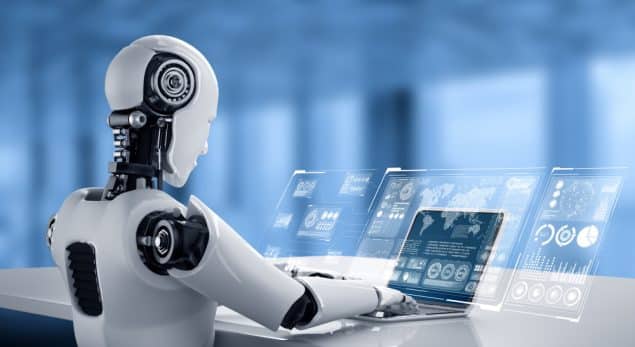Home » Business News • News Stories » Hydrogen planes, bionic eyes and clothes that can hear – Some incredible technology is on the way
Hydrogen planes, bionic eyes and clothes that can hear – Some incredible technology is on the way
https://www.whatjobs.com/news/business-news/hydrogen-planes-bionic-eye-and-clothes-that-can-hear

By Hugh Fort in Business News, posted May 20, 2022

The future is coming a lot sooner than you think.
These advancing technologies will change the way we live, and how we look after our bodies and help us prevent climate disasters.
Technology is swiftly improving, offering new innovations and revolutionary projects every year.
From robots that can read minds to AI that can create images on their own, we've picked out some of the greatest and most fascinating ideas.
READ MORE: A ROBOT THAT CAN BEAT SUPER MARIO, SLUG CATCHERS AND FAKE MOULD- FIVE STRANGE INVENTIONS
Clothes that can hear
Wearable technology has come far over the years.
One promising route involves giving clothes ears, or at least the same ability as the human ear.
Researchers at a company called MIT have created a fabric that can detect a heartbeat, handclaps, or very vague sounds.
The company says this could be used as a wearable tech for blind people, could be used to detect damage to buildings, or even in into fishnets to detect the sound of fish.
The material they are using is thick and work is still ongoing but they hope to roll it out for customers over the next few years.
Brain reading robots
No longer something we imagine like flying cars, the use of brain-reading technology has enhanced hugely in recent years.
One of the most fascinating and practical uses we’ve seen tested comes from researchers at the Swiss Federal Institute of Technology Lausanne (EPFL).
Due to a machine-learning algorithm, a robot arm, and a brain-computer interface, researchers have created hope for people who are tetraplegic patients (unable to move their upper or lower body) to be able to interact with the world.
In tests, the robot arm would execute simple tasks such as moving around an obstacle.
The algorithm would then analyze signals from the brain using an EEG cap (What's this?)
It would then be able to learn when the arm had done something the brain deemed to be wrong.
For example this could be going too fast or moving to close to an obstacle.
As time goes on, the algorithm would be able to adjust to the person's brain signals.
It is thought this could lead to wheelchairs controlled by the brain, which could massively help tetraplegic patients.
Hydrogen planes
Carbon emissions are a big concern when it comes to commercial flights, but there is a possible solution and it has received a lot of funding.
A £15 million UK project is working on creating a plane that runs on hydrogen.
Called Fly Zero, the project is led by the Aerospace Technology Institute, which is working with the UK government.
The company's designers have created a concept for a mid-size plane powered only by liquid nitrogen.
The plane could have the capacity to fly around 279 passengers halfway round the world without having to stop.
In theory, this could mean a zero-carbon flight with no stops between London and the west of America.
It could also do London to New Zealand with a single stop.
Bionic eyes
Previously only seen in sci-fi films, work is being carried to create bionic eyes which could cure blindness.
It's already happened.
In 2021, Israeli surgeons were able to successfully install an artificial cornea into a 78-year-old blind man.
Incredibly, he was able to read and recognize his family members once the bandages came off.
The technology is able to merge with human tissue without their body rejecting it.
Research is also being carried out in Austrila where users wear a pair of glasses fitted with a camera.
This can send data to the implant, and can give the person a rudimentary sense of sight.
AI image-generation
The world of art is another area where artificial intelligence is starting to be used.
Researchers at a company called OpenAI have created software which can create images from worded prompts.
So, for example you could type in "man walking down the road whistling and swinging and umbrella" and the software can make images of that.
The tech is called Dall-E and could, in the future, be used to create art exhibitions, for companies to get original artwork and to create memes for the internet.
Follow us on YouTube, Twitter, LinkedIn, and Facebook










